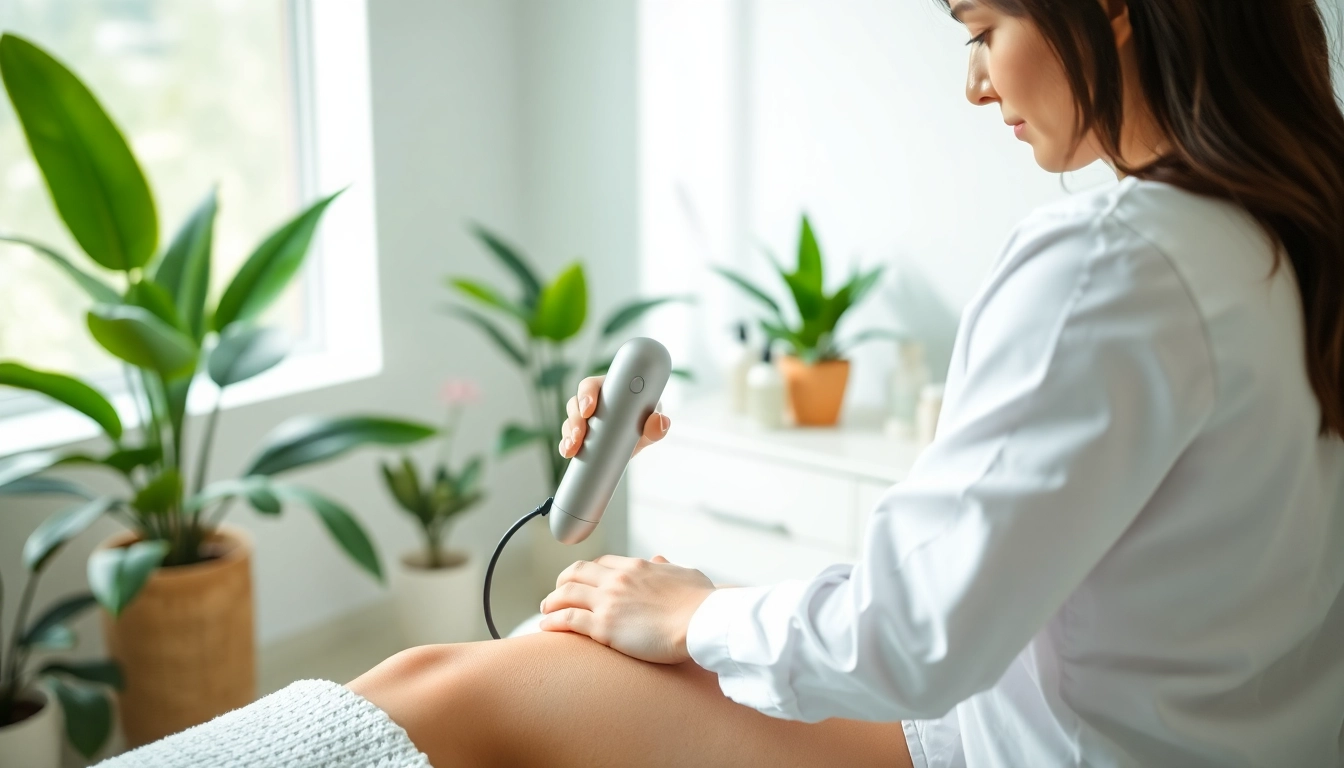Understanding Cellulite and Its Causes
What Is Cellulite?
Cellulite is a common skin condition characterized by the dimpled, lumpy appearance of the skin, especially in areas such as the thighs, hips, buttocks, and abdomen. This phenomenon occurs when underlying fat deposits push through the connective tissue beneath the skin, creating an uneven surface. While cellulite is often perceived as a cosmetic issue, it is important to note that it is not a medical condition nor does it signify poor health. Approximately 80-90% of women experience cellulite, making it a widespread phenomenon primarily influenced by hormonal, genetic, and lifestyle factors.
Factors Contributing to Cellulite
Several factors can contribute to the development of cellulite, ranging from biological to environmental influences:
- Genetics: Family history can play a significant role in determining one’s likelihood of developing cellulite. Genetic predisposition may affect the distribution of fat and the strength of connective tissue.
- Hormonal changes: Hormones, particularly estrogen, are believed to influence the formation of cellulite, as they play a role in fat storage and skin elasticity.
- Diet: A diet high in fats, sugars, and processed foods can contribute to cellulite, as can dehydration and excessive salt intake. Poor nutrition may lead to weight gain and less skin elasticity.
- Lifestyle habits: Sedentary lifestyles and lack of exercise can exacerbate cellulite. Regular physical activity helps to improve circulation and strengthen muscles, which may reduce the appearance of cellulite.
- Age: As individuals age, skin loses collagen and elasticity, making cellulite more noticeable over time.
- Body fat percentage: While cellulite can occur at any weight, those with higher body fat percentages tend to have more visible cellulite.
How Cellulite Affects Different Body Types
Cellulite can affect any body type, but its appearance may vary based on individual characteristics:
- Endomorphs: Individuals with this body type often have a higher percentage of body fat and may find that cellulite is more pronounced due to the thicker subcutaneous fat layer.
- Ectomorphs: Those with a leaner body type may have less pronounced cellulite, but it can still appear due to skin texture and elasticity issues.
- Mesomorphs: This athletic body type typically has a balanced fat-to-muscle ratio; however, they can still develop cellulite depending on lifestyle and hormonal factors.
Top Cellulite Therapy Treatments
Non-Invasive Techniques
Non-invasive treatments for cellulite aim to improve skin appearance without surgical intervention. Common options include:
- Acoustic Wave Therapy: This technique utilizes sound waves to break up cellulite by stimulating blood flow and promoting lymphatic drainage, which may help smooth the skin’s surface.
- Topical Treatments: Creams and lotions containing active ingredients—such as caffeine, retinoids, and botanical extracts—are designed to improve skin texture and temporarily reduce the appearance of cellulite.
- Massage Therapy: Massage can enhance circulation, lymphatic drainage, and collagen production. Massage techniques, such as lymphatic drainage massages, are commonly utilized in spas and clinics to target cellulite.
- Endermologie: A specialized form of massage using suction and rollers to stimulate circulation and promote lymphatic drainage, helping to smooth out the skin.
Minimally Invasive Procedures
Minimally invasive treatments include procedures that require little downtime and typically offer more immediate results. These may involve:
- Subcision: A surgical method that involves inserting a needle beneath the skin to break up connective tissue bands causing cellulite, promoting smoother skin over time.
- Cellfina: A clinically-proven procedure that uses a small device to cut the fibrous bands underneath the skin, smoothing the skin’s surface in targeted areas.
- Laser Treatments: Laser treatments such as Cellulaze use energy to melt fat, stimulate collagen production, and cut the bands that cause cellulite. Results can be seen after just one treatment.
At-Home Remedies for Cellulite
While professional treatments can be effective, some individuals prefer to address cellulite through at-home strategies. Some of these remedies include:
- Regular Exercise: Incorporating strength training and cardiovascular exercises can help tone muscles, reduce body fat, and improve the overall appearance of skin.
- Healthy Diet: Eating a balanced diet rich in fruits, vegetables, whole grains, and lean proteins can aid in weight management and may help reduce the visibility of cellulite.
- Hydration: Drinking sufficient water is essential to maintaining skin elasticity and overall health, which can contribute to reduced cellulite appearance.
- Dry Brushing: This technique involves using a natural bristle brush on dry skin to exfoliate and improve circulation, which might aid in reducing the appearance of cellulite.
Benefits of Cellulite Therapy
Improved Skin Texture and Elasticity
Engaging in cellulite therapy can lead to noticeable improvements in skin texture and elasticity. Treatments stimulate collagen production, leading to firmer skin that looks smoother and healthier. As the connective tissue strengthens, the skin’s appearance enhances overall, providing individuals with a more youthful and toned look.
Boosting Self-Confidence
Many people struggle with self-image issues related to the presence of cellulite. Engaging with effective cellulite therapy can boost self-esteem by providing the sense of control over one’s appearance and reinforcing body positivity. Improved confidence may encourage individuals to participate in activities such as swimming or wearing more form-fitting clothing without fear or embarrassment.
Long-Term Skin Health
In addition to cosmetic benefits, many cellulite treatments contribute positively to long-term skin health. Procedures often stimulate blood flow and enhance the overall lymphatic drainage process, which can improve skin tone and texture. By promoting healthy skin practices, individuals are setting the groundwork for future skin health, minimizing the risk of other skin-related conditions.
Choosing the Right Cellulite Therapy for You
Consulting with Professionals
Before starting any cellulite therapy regimen, it is vital to consult with qualified professionals in the field. Dermatologists, plastic surgeons, or licensed estheticians can provide personalized assessments, recommend suitable treatments, and help clarify any concerns about potential side effects or outcomes. This professional guidance is essential for achieving the best results tailored to individual needs.
Assessing Your Skin Type
individuals should consider their skin type and sensitivities when exploring cellulite therapy options. Different treatments may yield varying results for distinct skin types, and being aware of personal skin characteristics can help in selecting the most effective method.
Understanding Treatment Costs
Costs associated with cellulite therapy can vary widely based on the type of treatment, practitioner expertise, and geographic location. It is essential to inquire about pricing during consultations and consider potential additional costs, such as follow-up visits or maintenance treatments. Budgeting for cellulite therapy ensures individuals are prepared for a financial commitment and can make informed decisions about their care.
Aftercare and Maintenance for Lasting Results
Post-Treatment Care Instructions
Following any cellulite treatment, adhering to post-treatment care instructions is crucial for maximizing results. Instructions may include avoiding strenuous activities for a short period, limiting sun exposure to treated areas, and applying specific topical products as advised. Carefully following these guidelines can greatly enhance the efficacy of the treatment.
Incorporating Lifestyle Changes
To sustain the results of cellulite therapy, individuals should consider incorporating healthier lifestyle changes. Regular exercise, a balanced diet, and staying hydrated can contribute to maintaining smoother skin. Additionally, practices such as dry brushing and regular massages may enhance blood circulation and lymphatic drainage, further supporting skin health.
Monitoring Progress and Adjustments
Finally, keeping track of progress following cellulite therapy can help highlight any changes in skin appearance. Individuals should periodically assess the treated areas to determine if further treatment or modifications to their routine are necessary. Engaging in ongoing consultations with professionals can guide these adjustments, reinforcing the commitment to achieving optimal results.
In summary, cellulite therapy encompasses a variety of techniques tailored to individual needs, each offering unique benefits. By understanding the nature of cellulite and the available treatment options, individuals can effectively work towards smoother, healthier skin. For those interested in exploring cellulite therapy, ensuring informed choices, regular maintenance, and professional guidance paves the way to long-lasting success.








